
When I first sat down with Star Wars: The High Republic Adventures, I honestly wasn’t sure what to expect. Besides watching The Acolyte (which takes place roughly a century after this story), I didn’t have much experience with this era of Star Wars. Adding to this, the first issue immediately makes it clear that it’s picking up from events in a previous series that I hadn’t read or even researched online prior to starting it.
I was diving into the unknown almost entirely blind. Was it worth it? Can the story be enjoyed for what it is without having to go back and read other series? Let’s find out together.
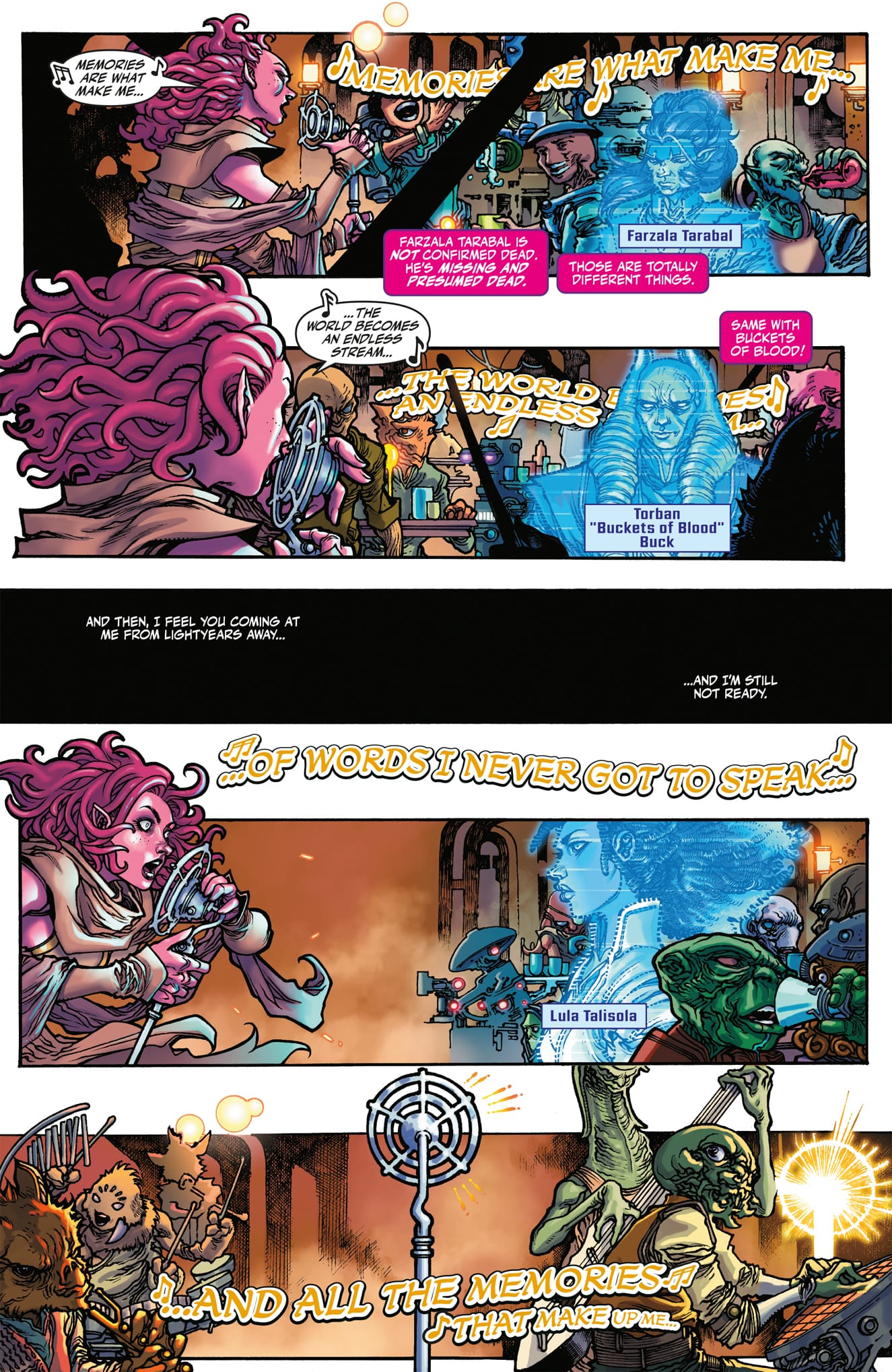
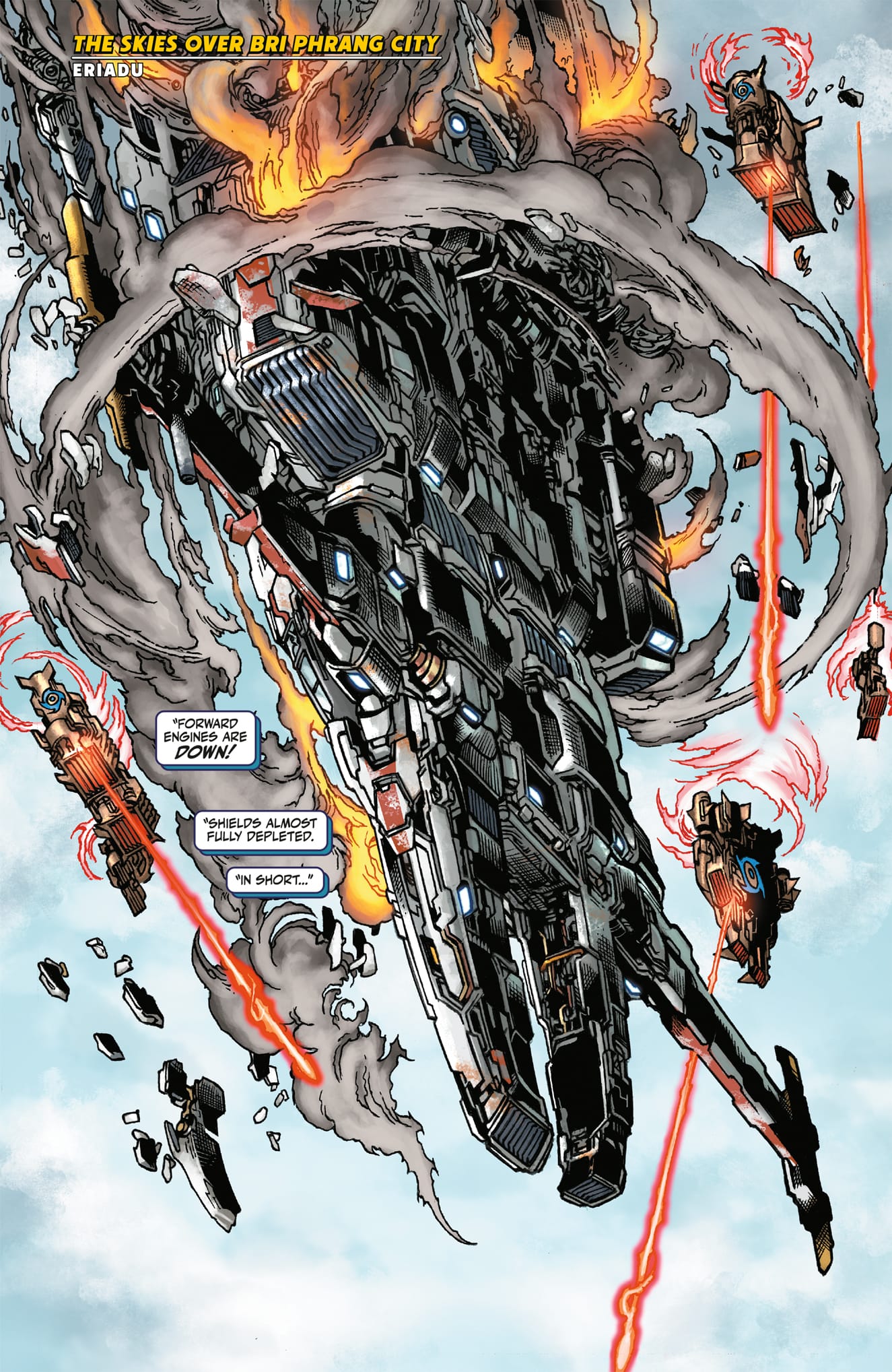
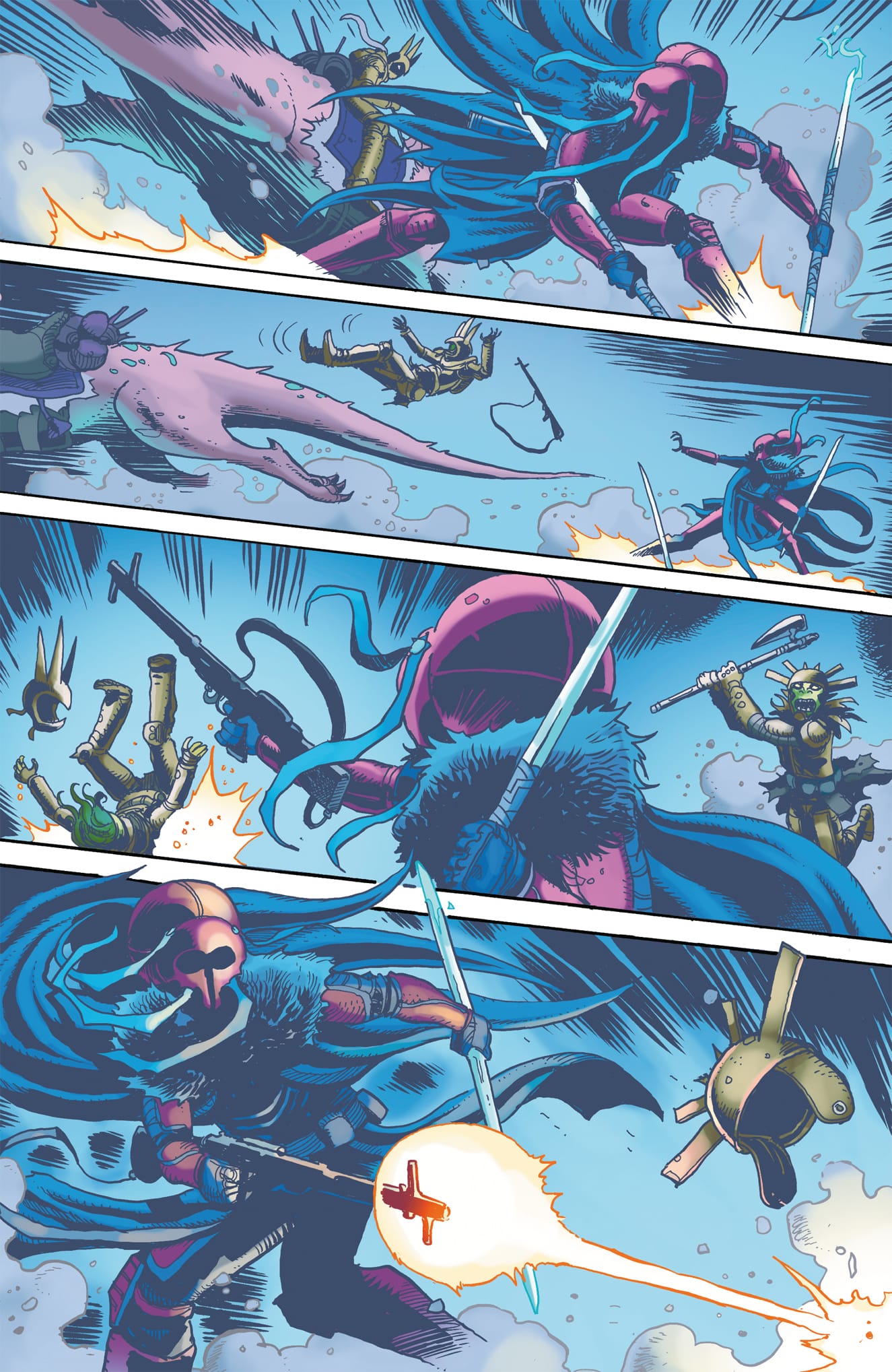
*Mild spoilers ahead for issues #1-10*
The story begins one year after the fall of the Starlight Beacon at the hands of the Nihil. What’s the Starlight Beacon? Who are the Nihil? Who knows, but given that they’re clearly important, I’m sure we’ll find out eventually. What’s clear right now is that whatever happened, it was devastating, as the main characters are remembering those who either lost their lives or are presumed dead in the wake of the catastrophe.
At the center of this memorial is Zeen Mrala, a young Force-sensitive fighter, who —as the opening panels reveal—also happens to be a talented singer. It’s through her eyes that we’re introduced to the dead/presumed dead, who appear as holograms scattered throughout the gathering.
As her eyes move from hologram to hologram, she becomes bothered at the inclusion of those not officially confirmed dead, particularly when she sees a particular person included: Lula Talisola, a Jedi who was on the Starlight Beacon when it fell. Zeen refuses to believe Lula is dead, despite her having not been seen or heard from in a year. So, with the help of Jedi Knight Qort, she sets off to find her, leading to a big twist at the end of issue #1 that kicks off the rest of the series. And what a series it was.
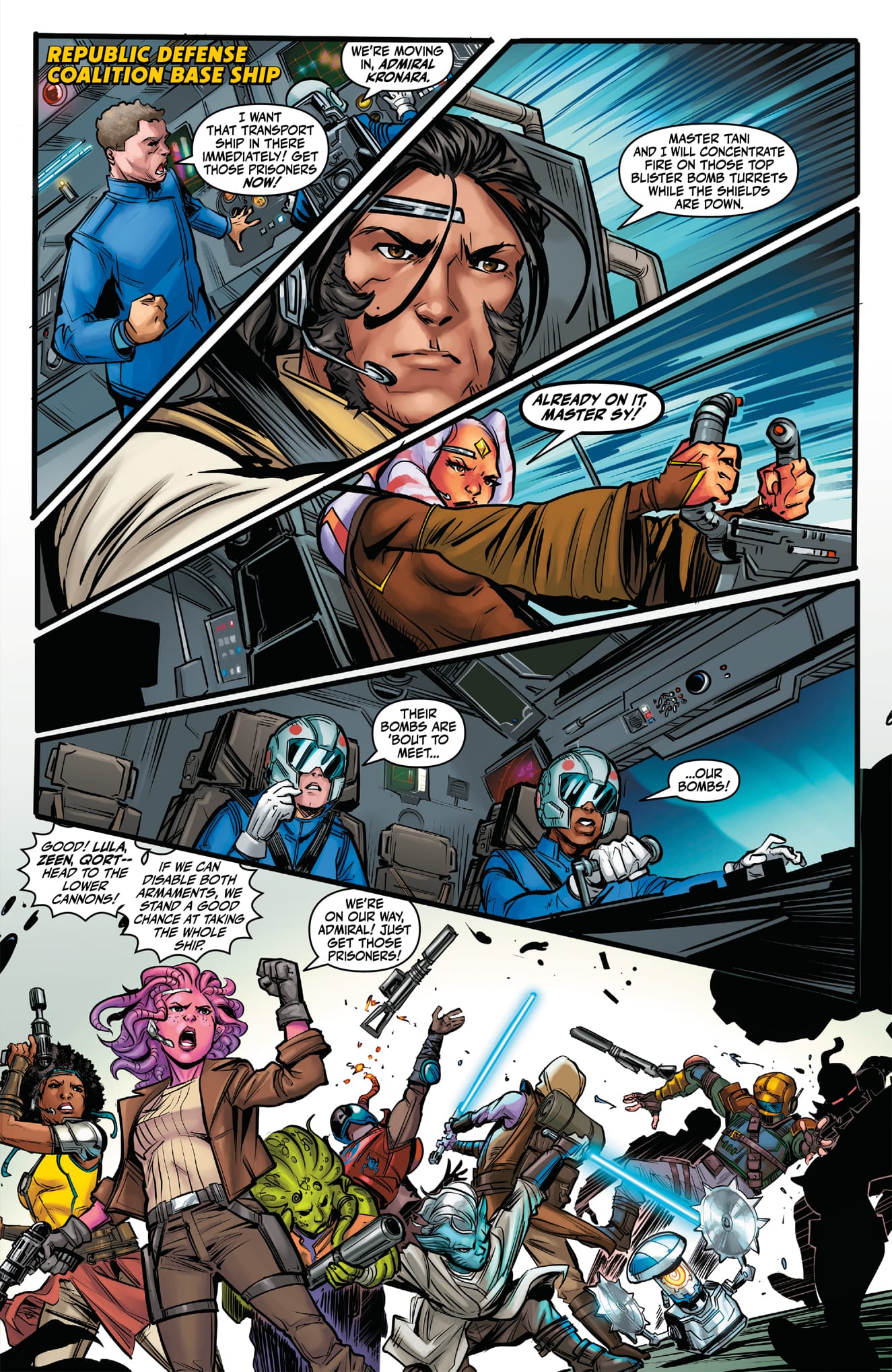
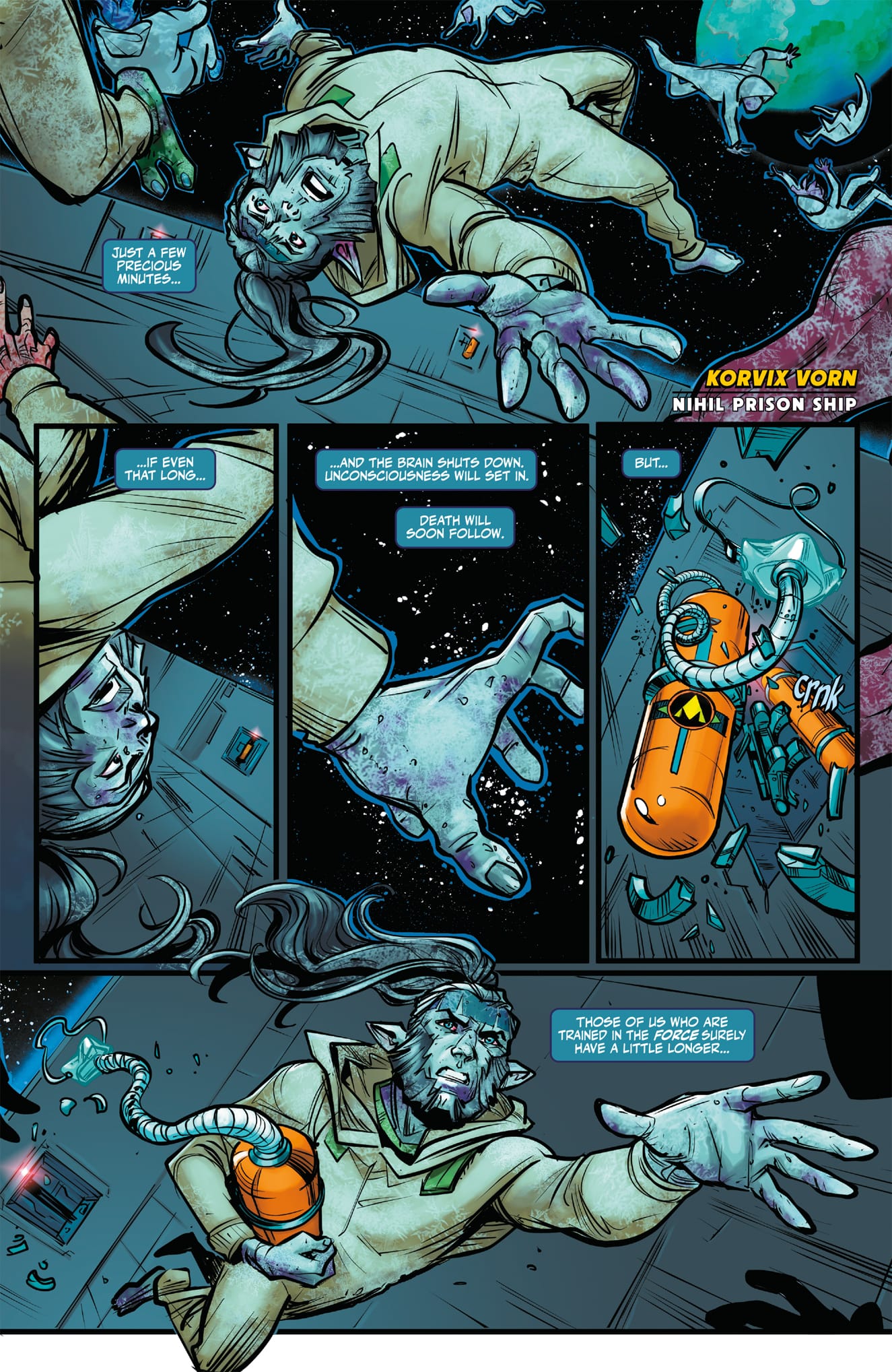
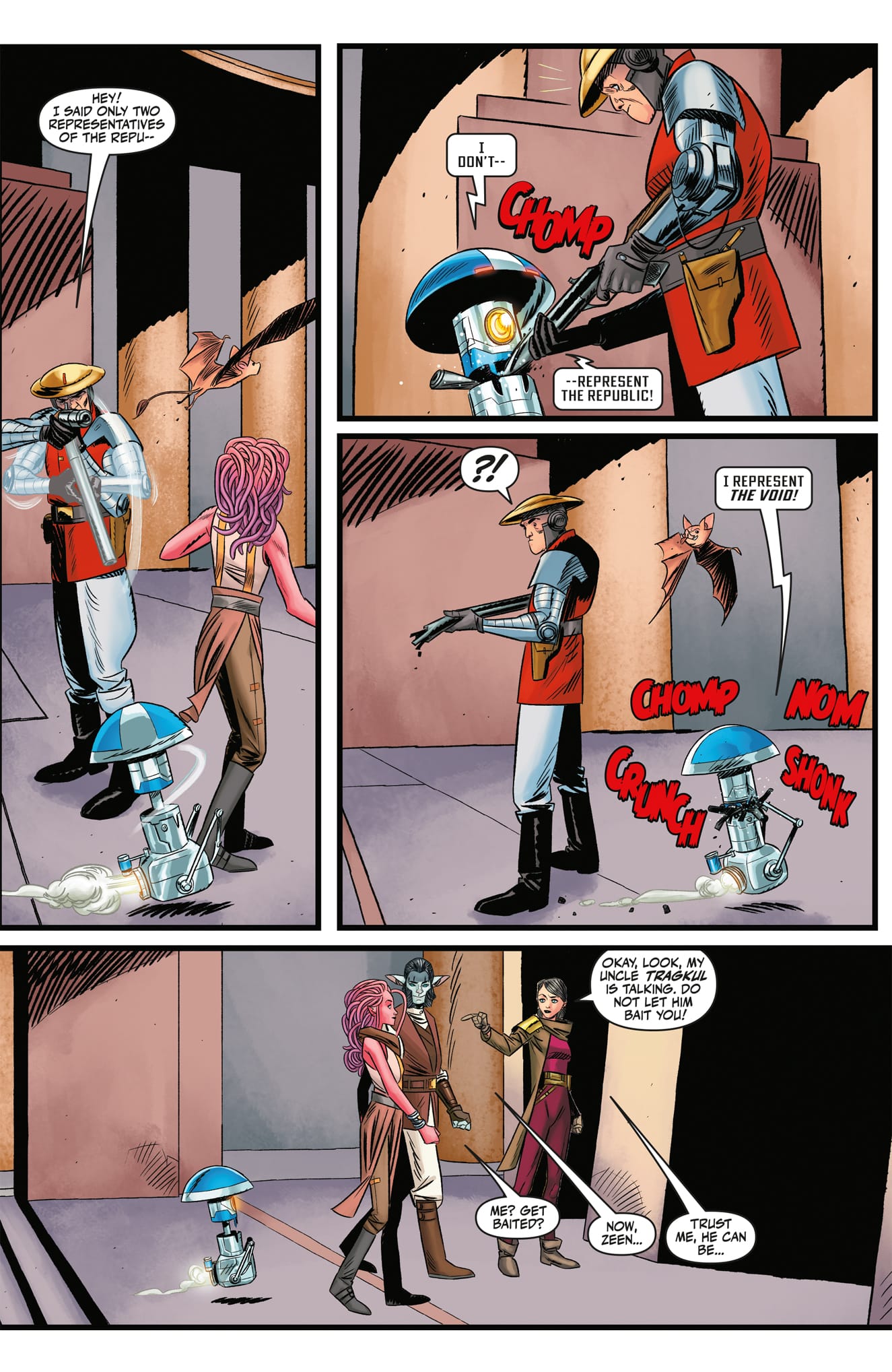
While I did spend part of my time reading the first couple issues feeling like I was missing some important context that might have helped me to be a bit more invested in the various characters/conflicts I was following from the start, this wasn’t such an issue that I couldn’t enjoy the story for what it was. The story wastes very little time on setup before jumping right into the main plot, which —thanks in part to the aforementioned twist at the end of the first issue— sucked me in immediately.
As I continued reading, my having not read the previous series rarely interfered with me being able to follow this particular story, save perhaps for not immediately recognizing new characters as they were introduced or understanding why certain things were happening. Fortunately, the story was very forgiving in both regards, with Daniel Jose Older and the team providing enough exposition within the context of this particular story to catch me up without needlessly bogging down the story. As someone that’s read their fair share of comics starting in the middle of a storyline, this was greatly appreciated.
I never felt lost or needed to stop to look something up in order to understand what was happening. And while part of this could be credited to it being a Star Wars book (Jedi good, other people bad), in my opinion it owes just as much to the quality of the writing and the way the story is presented, whether that be exposition woven into the dialogue or interesting pages that provide information about the Storm Wall or maps of the galaxy or specific areas that help give a sense of scale to the conflict at hand.
But how is the story?
Well, it’s Star Wars. Sure, it’s lacking most of the characters fans of the movies or shows would recognize (though a few recognizable faces may pop up from time to time), but the core concept is the same. The Jedi and the Republic have been involved in a violent conflict with the Nihil, a group that can best be described as “space Vikings,” who hate Force users. At the start of the story, they’ve conquered a sizable section of the galaxy, locking it away behind a wall that prevents any ships other than theirs from passing through.
Needless to say, they’re a pretty significant threat, and a fun change from the usual Jedi vs Sith conflicts seen in most Star Wars stories. From the very beginning, the writers make sure it’s understood just how dangerous these marauders are, not just because they’ve managed to conquer a portion of the galaxy, but also because we’re shown immediately how many Jedi have fallen already in the conflict. And it doesn’t stop there. Throughout the story, the conflicts the protagonists find themselves in are never one-sided, and even when things look to be going well, the stakes continue to rise as the first half of the series concludes.
All in all, I had a lot of fun with this series. The protagonists are fun, whether while following them through a high-stakes mission or just seeing how they interact with each other in wholesome, rom-com-esque moments that break up the ever-present tension looming over all of them. The villains might not be the most complex villains seen in Star Wars (at least not the ones introduced thus far in the series), but they’re still fun to root against as they come up against the Jedi and Republic.
I would absolutely recommend this series to anyone looking for more adventures in a galaxy far, far away, and can’t wait to see where the story goes from here.
Star Wars: The High Republic Adventures Phase III
Great
While you might want to check out the previous Star Wars: The High Republic stories first, High Republic Adventures Phase III (issues #1-10) is a fun story that can easily be enjoyed on its own. With compelling characters and a writing team that excels at giving just enough backstory without bogging down the pace of the story, it’s one of the most fun Star Wars titles I’ve read in a while. It is a fine addition to any Star Wars lover’s collection.
Pros
- Fun characters
- Fast-paced action
- An interesting new threat to the Galaxy
Cons
- Readers that haven't read previous The High Republic Adventures stories may feel a bit lost
- The main villain in the story doesn’t get fleshed out enough for how often they appear
This review is based on a retail copy provided by publisher.
